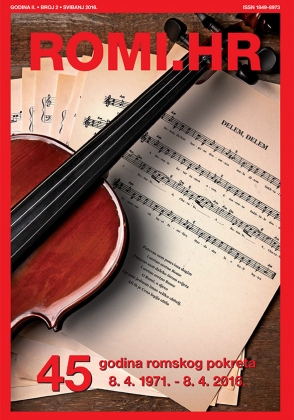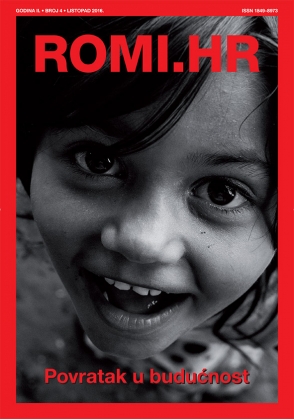Focus ROMI.HR
/A study conducted by Italian researcher Elisa Novi Chavarria explores the history of Roma in Italy through the study of surnames, offering a novel method to trace their migration and integration from the 15th century onward. By analyzing ethnonyms and patronymics in historical records, her work sheds light on Roma presence despite limited documentation, revealing patterns of coexistence and identity formation still visible today.
Unveiling the history of Roma people is a tough challenge for academics in every field: from history to sociology, from genetics to linguistics, understanding where Roma come from and when their migration started is still an open question that scholars are trying to answer.
For what concerns the origins of the Roma population in Italy, the problem is possibly even more complex, because the data about their arrival and their movement around the peninsula is scarcely documented for centuries. Moreover, the difficulties they experienced in integrating into the local communities that were hosting them put them at the margins not only of societies, but also of any experiment of data collection and census of the population. Indeed, after the first Roma arrived in the Italian city of Bologna in 1422, their traces became very blurred, and it has been almost impossible to follow them properly along their peregrinations.
For these reasons, scholars had to think a bit out of the box to try to get a bigger, more complete picture of the presence of Roma in Italy. In this sense, a particularly interesting approach has been adopted by Elisa Novi Chavarria, Professor of Modern History at the University of Molise, in Southern Italy. Her 2012 research I cognomi del popolo rom (Roma people’s surnames) starts from the assumption that since Roma from the 15th century did not produce any written document to report on their life and travelling, any serious analysis should start from other sources (judicial, fiscal, demographic and literary references) which are not specifically drafted to deal with Roma, but that could include relevant pieces of information to reconstruct Roma history.
However, before diving deeper into Novi Chavarria’s research, it is important to take a moment to reflect on a feature that has become fundamental in modern and contemporary societies for building identities of individuals: surnames. Surnames are what build connections between generations; they identify kinship and familiar relationships, and in many communities, surnames developed from nicknames or epithets that were used to describe one person depending on some peculiar characteristic, or even based on their jobs. This system of identification was already present in the past, in very populous societies in which distinguishing family links was getting increasingly important: for example, this was the case in the Ancient Rome, where the whole name was composed by three elements: the praenomen, which corresponded to present-day names; the nomen, which was shared by people belonging to the same family; and lastly, the cognomen, which was originally individual and could be a popular nickname (like in the famous case of Marcus Tullius Cicerone, where Cicerone was coming from cicero, the latin word for chickpea), and soon became hereditary and was used to differentiate people of various branches of the same family.
However, it is harder to apply this very same logic to Roma people: when they arrived to Europe, these groups were likely subjected to some sort of cultural shock, given that they went from interacting simply with the tribe they were part of, and in which everybody knew each other, to way bigger communities in which both Roma and non-Roma needed to find a way to identify to what group/family they were belonging. Therefore, the only viable solution was to add an ethnonym (a name by which a group or people is known) next to Roma names. Since for many, many centuries Roma people would be identified by others as zingari (gypsies) or egizi (egyptians) on the basis of their declared origins, these adjectives soon ended up being the nucleus of what would become Roma surnames.
According to the available sources, in Southern Italy, there were several families with surnames like de Gipsiis, d’Egittio, or d’Egiptio between the XV and XVI centuries, which, for the author, were likely to be Roma families. There were, however, many more popular surnames that derive directly from the epithet
zingaro and which are still very present in some regions of Italy. Indeed, even though Novi Chavarria found historical traces of the surname Zingaro, especially in the regions of Apulia and Molise, in Southern Italy, that surname is not really common anymore, except for 149 Italian municipalities in those areas in which Roma had been living since the late 16th century.
A remarkably more common surname is, instead, Zingarelli or, in some cases, Zingaretti. Both of them seem to be significantly more widespread across the whole country, from North to South, with the particularly interesting exception of Emilia-Romagna (in Northern Italy) and Sardinia which, however, due to its geographical distance from the rest of the country, has likely followed a different path in terms of surnames and also migration of Roma.
In the following centuries, Roma started adopting another approach to surnames, which was no longer based on ethnonyms but rather on patronymics. Roma names would be followed by a surname that would derive directly from the father’s or ancestors’ names. Examples of this practice in the XVI-XVII centuries in Italy were Alessandro (name) Di Michele (surname), literally meaning Alessandro of Michele. It’s the same logic that applies to present-day English surnames like Williamson (literally: son of William), or Croatian surnames like Petrović (meaning son of Petar). This second solution was much more common in the abovementioned region of Emilia-Romagna, which explains the lack of surnames linked with the word zingaro, and in the XVIII century this “new” system of surnames was widely spread in Southern Italy too.
This innovative outlook on Roma families and tribes is quite interesting because it offers additional layers of understanding and a more detailed perspective on how integration processes would have happened so many centuries ago. Moreover, many of these surnames are still in use today, allowing scholars and, more generally, those who would like to learn more about the first wave of Roma migration to Italy, to compare settlements from the XV-XVI centuries to present-day Roma communities. This discourse does not apply, unfortunately, to Roma who came to Italy in the 1990s, mainly from Romania, Bosnia and Herzegovina, and Kosovo, because they live mainly outside society and cities, in informal camps, with minimal possibilities of integrating into local communities.
Notwithstanding these limitations, the approach taken by Novi Chavarria is very useful, and it would be interesting to see a similar method applied to other Roma communities in other countries, especially those in which there still isn't systematic research on the history of Roma. This would also help normalize Roma presence in Western European countries, simply because it would show that they have been peacefully coexisting with non-Roma communities for centuries, and that integration is actually possible, and that collective effort can help overcome difficulties related with different cultures, languages, and habits.
 Back to Focus
Back to Focus













